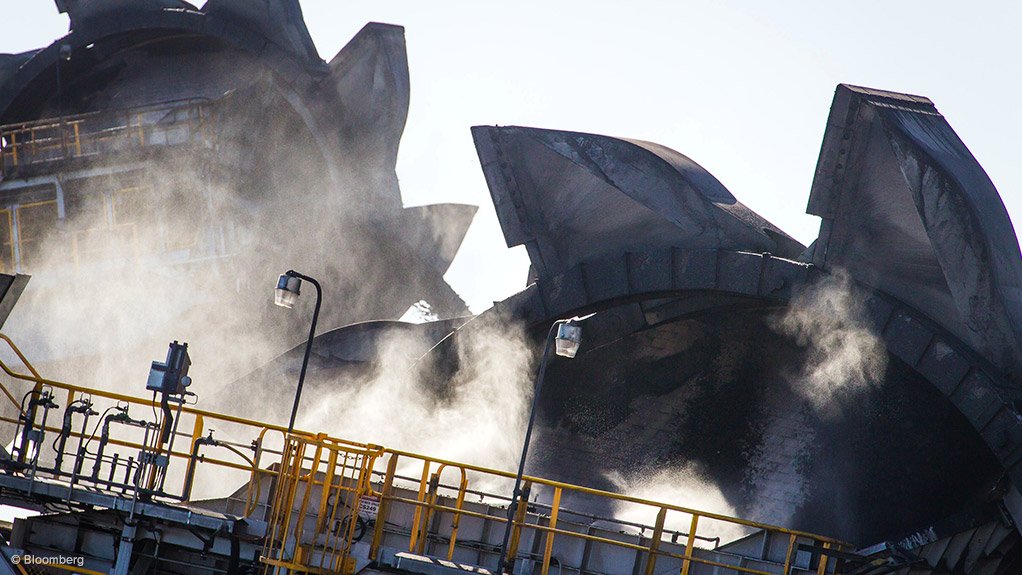JOHANNESBURG (miningweekly.com) – Queensland Natural Resources and Mines Minister Dr Anthony Lynham on Wednesday unveiled a three-pronged strategy to improve coal workers’ health, after a review of the Coal Mine Workers’ Health Scheme found that a health screening system to protect underground coal workers had failed.
Eleven miners have been diagnosed with the disease, which is caused by long-term exposure to high concentrations of coal dust, and a review by Monash University Professor Malcom Sim suggested that there may be more cases.
The Queensland government on Wednesday released the final report into the respiratory component of the scheme. The report revealed “major system failures at virtually all levels” of the design and operation of the respiratory component of the scheme and was described as a “huge wake-up call”.
“Every worker has a right to go to work and return home to their family, safe and healthy. This has not happened for our underground coal workers, and that’s not good enough,” said Lynham.
The new Queensland strategy, which was developed together with Monash University, centred on the prevention of new cases, early detection through better screening and a safety net for miners with coal workers’ pneumoconiosis.
“Early detection through an effective screening programme is critical to protecting the current workforce. A miner with the first stages of coal workers’ pneumoconiosis may have no symptoms, but should not continue to work in a dusty environment, so the disease doesn’t progress,” said Lynham.
He added that all underground coal mines would offer their workers new checks on current X-rays or fresh X-rays if the X-ray was taken more than two years ago. All new X-rays would be checked twice - by an Australian radiologist and, as an interim measure, by US-based accredited X-ray readers - until local radiologists undergo further training to the international standard.
Intensive training would be developed for the general practitioners who conducted the health assessments on coal miners. There would also be a focus on the lung function tests that miners did as part of their health assessments.
Miners’ medical data would be captured and stored digitally and doctors would be required to report cases to government.
The Monash University review had checked 257 long-term coal workers’ X-rays, and of those, 18 miners had been recommended to undergo extra tests.
“My Department of Natural Resources and Mines is making contact with these miners’ medical advisers so the doctors can advise the miners to have a further test.”
Lynham said he would also lobby the federal government to establish a national screening programme that included retired coal miners.
In terms of providing a safety net for workers, the Minister said miners diagnosed with coal workers’ pneumoconiosis - including retired miners – should be able to rely on WorkCover Queensland or their employer’s own insurance scheme.
‘INDUSTRY APPALLED’
Queensland Resources Council (QRC) CEO Michael Roche said the final report was sobering reading.
“Industry is appalled at the apparent failure across the spectrum of screening, from lung function tests, chest X-rays through to questions over the qualifications and expertise of those carrying out the testing and screening.”
Roche said eight underground coal mining companies had written a joint letter of support to Lynham, backing a new protocol for health screening of coal workers.
“QRC members are sprinting out of the blocks to help to do their part to action the recommendations that are within their powers. Sadly, those companies thought they were doing the right thing for their workers’ health by having them regularly screened – tragically it was that very process that has been found to have repeatedly failed.
“Prevention, through stricter mechanisms to protect workers from dust, and early detection via an overhaul of existing health screening practices and expertise are the beginning.
“Industry is committed to working together to ensure dust levels remain under the appropriate limit.”
Roche added that the report was a “huge wake-up call” and would result in essential changes to health screening, dust control and dust monitoring to ensure every one of the thousands of underground coal workers were protected into the future.
QRC and its members would work with the Queensland government and medical experts to ensure that the Coal Mine Workers’ Health Scheme was upgraded to a standard that would once again provide reassurance to workers.
Industry was determined to collaborate to share learnings on successful practices for dust management and had committed to hold a dust management workshop in the third quarter of 2016.
Edited by: Creamer Media Reporter
EMAIL THIS ARTICLE SAVE THIS ARTICLE
To subscribe email subscriptions@creamermedia.co.za or click here
To advertise email advertising@creamermedia.co.za or click here













